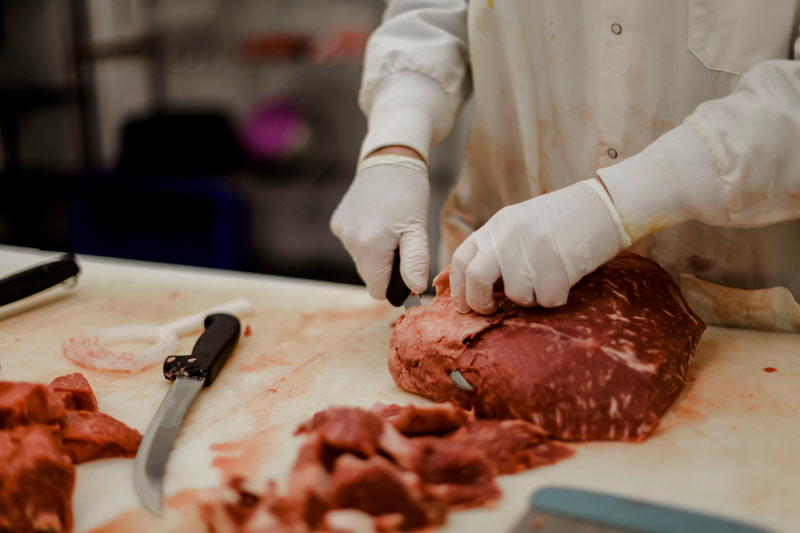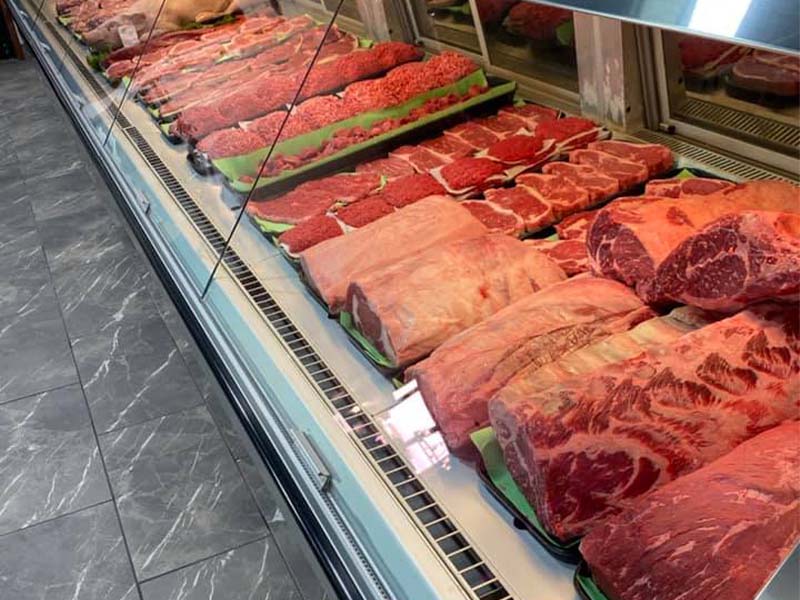Bagley Farms Meat Market Edwardsville IL: Your Trusted Resource for High-Quality Meats
Bagley Farms Meat Market Edwardsville IL: Your Trusted Resource for High-Quality Meats
Blog Article
Reveal the Art of the Butcher's Cut in a Modern Meat Market
In the ever-evolving landscape of modern-day meat markets, the butcher's cut has transcended its standard roots, merging age-old craftsmanship with modern techniques. bagley farms meat market edwardsville il. Today's butchers are not just cpus of meat; they are knowledgeable artisans that highlight sustainability and ethical sourcing. Their experience in choose and preparing cuts tailored to details culinary needs uses an unparalleled dining experience. Yet, what absolutely establishes the modern-day butcher apart is their ability to forge a much deeper connection between consumers and the beginnings of their meat. How do these masters balance practice with technology, and what effects does this have for the future of meat consumption?
Evolution of Butchery Methods

The mid-20th century saw butchery strategies additionally improved by clinical insights right into muscle mass biology and meat aging, improving both tenderness and taste. Developments like vacuum cleaner product packaging and refrigeration expanded item shelf-life, enabling butchers to expand offerings and enhance quality assurance. This duration likewise marked the surge of customized equipment, such as band saws and meat slicers, which enhanced accuracy and performance in meat handling.
The 21st century has actually presented digital innovation into the butchery realm. Computerized systems now aid in monitoring animal provenance and maximizing cuts to meet details client preferences. Furthermore, a revival in artisanal butchery has actually emerged, mixing traditional abilities with contemporary expertise to cater to consumers looking for moral and lasting meat options. This evolution underscores a dynamic interplay between tradition and technology, conference modern demands while preserving the craft's heritage.

Comprehending Meat Cuts

Recognizing the details of meat cuts is crucial for both butchers and consumers seeking high quality and worth. For butchers, accurate cuts mirror skill and respect for the craft, guaranteeing minimal waste and optimal yield.
The key categories of meat cuts include primitive, sub-primal, and retail cuts. Butchers then break these down additionally into sub-primal cuts, prior to finally creating retail cuts offered to customers, like ribeye or tenderloin.
Recognizing muscle mass composition is critical; muscular tissues made use of more regularly by the pet often tend to be harder and are best fit for sluggish cooking methods, while less-used muscles, like those discovered in the loin, are extra tender and ideal for barbecuing or roasting. Knowledge with these distinctions empowers customers to make enlightened selections, boosting their culinary endeavors.
Picking High Quality Meat
Selecting the best meat involves more than just picking a visually appealing piece from the display. The art of choosing high quality meat requires a discerning eye and understanding of particular features that indicate quality and excellence. Pay attention to the color; beef needs to have a brilliant, cherry-red shade, while lamb must show a soft pink tone, and pork a pale pink. This shows the meat is fresh and hasn't been exposed to oxygen for too lengthy.
Second of all, think about the marbling, which describes the white streaks of fat within the muscular tissue. Proper marbling is an essential sign of tenderness and flavor, as it melts throughout food preparation, enhancing the meat's juiciness. Bear in mind, higher marbling commonly correlates with superior quality cuts, such as USDA Prime.
Texture is another essential aspect; meat should really feel strong to the touch, not slimy or overly soft. In addition, be conscious of the scent. Fresh meat needs to have a tidy, neutral scent, devoid of any type of sour or repulsive smells.
Coupling Cuts With Cooking Techniques
Successfully coupling cuts of meat with the proper cooking techniques is necessary for attaining optimal flavor and appearance. Different cuts differ in tenderness, marbling, and connective tissue web content, each needing particular strategies to unlock their possibility. For circumstances, tender cuts like filet mignon and ribeye, with their intrinsic marbling, gain from high-heat, quick-cooking methods such as grilling or pan-searing. These techniques enhance the meat's natural flavors and make certain a juicy finish.
Conversely, harder cuts like brisket and chuck roast are abundant in collagen, which damages down right into jelly when cooked slowly. These cuts are optimal for braising or slow roasting, permitting the meat to soften in time and establish deep, complicated tastes. Likewise, cuts such as short ribs and pork shoulder prosper with slow-cooking approaches, where extended cooking times change their durable More hints textures into delicious meals.
Lamb shanks and oxtail, which call for extended food preparation to soften, are ideal prospects for stewing or slow simmering. These methods coax out rich, hearty flavors while preserving dampness. By recognizing the one-of-a-kind features of each cut, chefs and home chefs alike can raise their culinary productions, guaranteeing each recipe is both satisfying and memorable.
The Butcher's Role Today
Navigating the developing landscape of the modern meat market, the butcher's function today prolongs beyond simple preparation of cuts. Contemporary butchers are cooking artisans, instructors, and supporters for lasting methods. They bridge the void in between the ranch and the fork by making sure moral sourcing, recognizing pet husbandry, and prioritizing openness in the supply chain. This change reflects the expanding consumer demand for high quality over quantity, where provenance and pet well-being are paramount.
Along with crafting exact cuts, butchers now involve directly with consumers, offering cooking guidance and tailoring choices to match specific demands and choices. Their competence in meat aging, marbling, and taste profiles empowers customers to make educated choices, boosting their cooking experiences. This customized solution exemplifies the butcher's developing duty as a trusted consultant in the cooking area.
Furthermore, butchers are pivotal in lessening waste, making anchor use of entire animals to review create diverse products such as sausages and stocks - bagley farms meat market edwardsville il. This extensive strategy not only values the animal but additionally lines up with modern sustainability goals. By doing this, the modern butcher embodies both practice and development, adjusting to an ever-changing market while maintaining the virtuosity and integrity of their craft

Conclusion
The contemporary butcher's craft intricately weaves typical methods with modern-day developments, highlighting lasting techniques and ethical sourcing. Mastery in comprehending diverse meat cuts and high quality indications encourages butchers to provide informed recommendations, aligning certain cuts with ideal food preparation approaches. This competence not just raises cooking experiences but likewise reinforces the link between customers and the origins of their food. By recognizing historic techniques while embracing contemporary demands, the butcher's role stays essential in today's sophisticated meat market.
Report this page